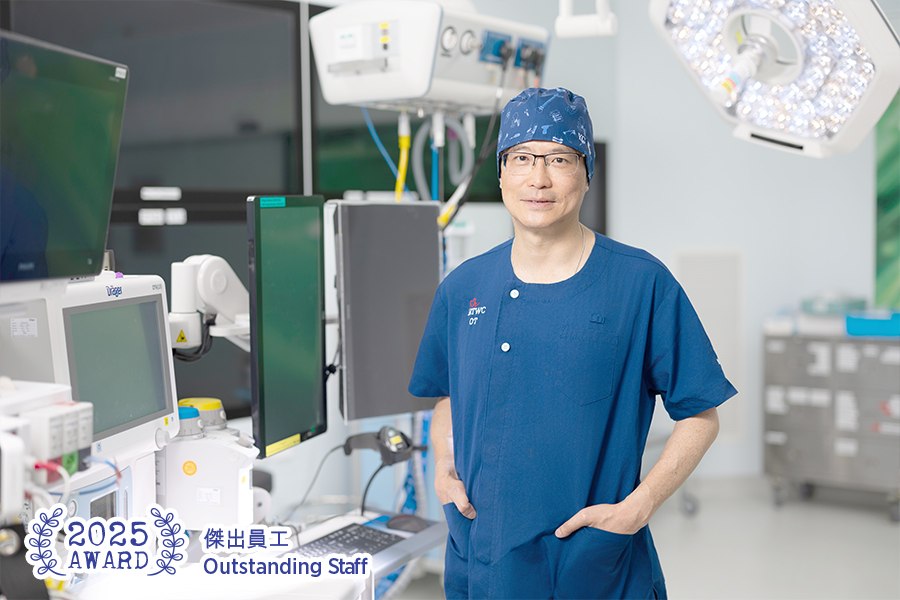Realigning treatment pathways
 Dr Wun Yiu-chung
Dr Wun Yiu-chung
Deputy Hospital Chief Executive / Chief of Service (Orthopaedics & Traumatology), Tuen Mun Hospital
When patients suffer fractures, dislocations, or tendon injuries, orthopaedic surgeons realign displaced fractures, repair soft tissues and, where necessary, perform joint replacement surgery. After rehabilitation, patients can then regain their mobility and independence. Dr Wun Yiu-chung explains that orthopaedics & traumatology (O&T) emphasises ‘repair, realign, replace, and rehabilitate’ – a philosophy that also underpins his management work outside the operating theatre.
Hong Kong’s ageing population means more patients than ever are awaiting joint replacement surgery. As Chairman of the Coordinating Committee in O&T of the Hospital Authority, Dr Wun spearheaded the implementation of the Structured Non-Surgical Treatment Programme (SNTP) across hospital clusters. Dr Wun and his team have introduced precision triage and early intervention to realign the treatment pathways of patients with degenerative knee osteoarthritis or those awaiting joint replacement surgery, matching them with suitable non-surgical solutions such as structured physiotherapy and integrative Chinese medicine interventions. “When select group of patients are referred for appropriate treatment in a timely manner, some no longer need surgery, while those who truly require can receive it sooner,” he says.
Dr Wun is also a pioneer in a surgical procedure called Reverse Total Shoulder Arthroplasty (RTSA). He recalls performing his first RTSA in 2015 for a 78-year-old patient who had long suffered from bilateral degenerative massive rotator cuff tear and arthropathy, resulting in chronic pain and an inability to lift his arms above shoulder level. Following surgery, the patient was finally able to raise his arm and fulfil his simple yet deeply meaningful wish — to change a lightbulb by himself. Another patient had experienced traumatic injury in 2004 and undergone several surgeries, including tendon repair and tendon transfer, but his shoulder function did not return. Finally, the Team successfully performed the newly adopted RTSA on him in 2016. He was then able to raise his arm again and expressed his heartfelt gratitude for the medical team’s unwavering care and support.
Dr Wun took the decision to pursue a career in orthopaedics during his internship, inspired by senior mentors who embodied the values of patient-centred care. He hopes the next generation of doctors will carry that spirit forward — embracing technology to improve workflow while always seeing treatment through the eyes of the patient to deliver the most appropriate care for the best interests of patient.